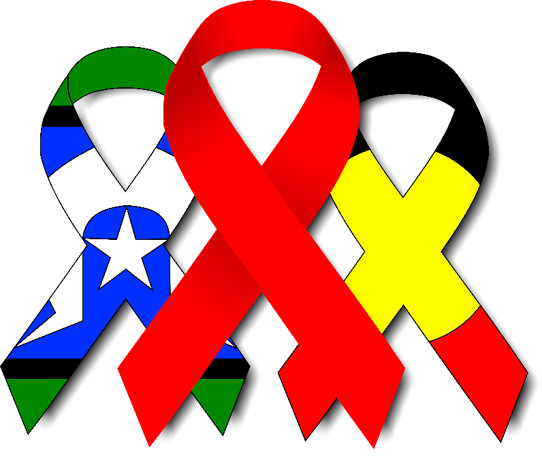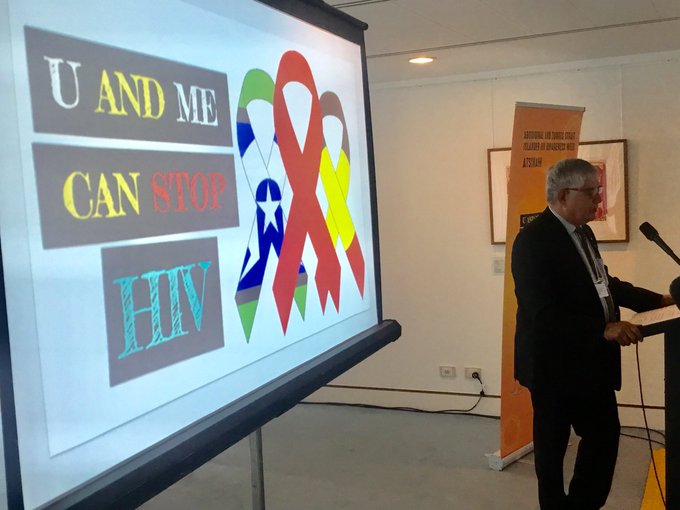HIV rates among the Indigenous community are 1.6 times higher than the rest of the country. At the same time, HIV in Australia is going down for all groups other than Aboriginal and Torres Strait Islanders.
It is estimated that there are 582 Aboriginal and Torres Strait Islanders living with HIV in Australia. Of those, 18 percent are estimated to be un-diagnosed.
Diagnosis rates of non-Indigenous population in Australia is 2.8 percent per every 100,000.
In the Aboriginal and Torres Strait Islander population, the diagnosis rate is 4.6 percent — and it’s largely among individuals who identify as LGBTQI.
Corey Cooley, a young Aboriginal man who was diagnosed with HIV four years ago, is a member of ‘The Institute of Many’ — a non-for-profit organisation that aims to help those living with HIV and AIDs.
“It’s a group for HIV people from all backgrounds of life, young old, different ethnicities, cultures, and we help each other out,” Cooley told 10 daily.
“We give each other advice about new medications, or your feelings — if you’re a little down — it’s basically a family.”
Cooley has received support through his HIV clinic at RPA Hospital in Sydney, which he said has been “amazing” with helping the Indigenous community.
“They run courses to quit smoking, to help with depression and stuff like that,” he said.
Despite this help and support for members of the Indigenous community with HIV, to date, there hasn’t been a targeted nationwide program to lower rates.
Until now.
The Young, Deadly and Free campaign, launched on Wednesday to coincide with Aboriginal and Torres Strait Islander HIV Week, is the first youth-targeted movement to lower HIV rates.
READ MORE: Australia-First HIV Home Test Could Help Curb Stigma
READ MORE: HIV Diagnoses Rates On The Rise For Heterosexual Australians
While there’s been a 12 percent decline in non-Indigenous HIV diagnoses between 2013 and 2017, the Indigenous population has seen an increase of 41 percent in the same time frame.
The statistics are alarming for Associate Professor James Ward, from the South Australian Health and Medical Research Institute (SAHMRI).
“We are concerned about the rising rates of HIV diagnosis rates among the Aboriginal and Torres Islander population, compared to the lowering rates of the non-indigenous population,” Ward told 10 daily.
The campaign is the brainchild of Ward and is part of a federally funded $3.4 million project being administered through the SAHMRI.
“It is aimed at young Aboriginal and Torres Strait Islanders through social media, info graphics, videos and animations,” Ward said.
“It involves the scaling up of prevention education and accessibility, and ensuring access to medication that brings HIV to an undetectable viral load.”
READ MORE: Vile Email Smear Shows HIV Stigma Still Alive In Australia
There is also a higher number of heterosexual Aboriginal and Torres Strait Islanders being diagnosed with HIV, compared to the non-indigenous population.
Twenty-one percent of all Aboriginal and Torres Straight Islander diagnoses are in heterosexual people, while in non-Indigenous it is 18 percent.
Injecting drugs is a particularly worrying exposure risk, said Ward. Eighteen percent of HIV diagnoses in Indigenous populations is attributed to injecting drugs, in non-Indigenous it is just three percent.
“This require targeted strategies rarely addressed in an Australian context,” Ward said.
Over the week, the Young, Deadly and Free campaign will be hosting 60 community events.
“We will be raising awareness about HIV, and remembering those before us,” said Ward.
Resources and support by the Young, Deadly and Free campaign are available here.
Feature Image: Supplied





